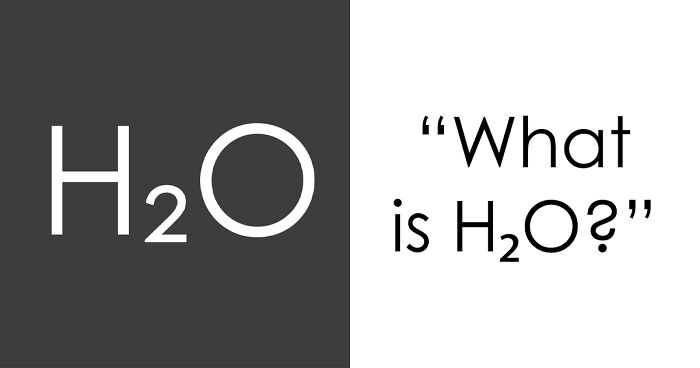
Prove You Can Switch Between Inches, Meters & Miles With This 22-Question Test
We all deal with measurements every day—whether it’s checking the temperature, guessing how far a road trip is, or figuring out how much flour goes into a recipe. But when it comes to switching between imperial and metric, do you actually know your stuff, or do you just take a wild guess?
This quiz will test how well you can convert everyday measurements. Some will be easy; some might throw you off.
Think you can handle it? Let’s see how you do! ⚖️

Image credits: cottonbro studio
Trivia • How Well Do You Know Your Units?
1. If a car is traveling at 100 km/h, how fast is it going in miles per hour?
60 mph
62 mph
70 mph
75 mph
2. What’s longer: 4 meters or 3 miles?
4 meters
3 miles
3. You’re baking a cake, and the recipe says 350°F. What is this in Celsius?
150°C
180°C
200°C
220°C
4. The Eiffel Tower is 330 meters tall. How tall is it in feet?
889 feet
984 feet
1,083 feet
1,205 feet
5. Which weighs more?
5 kg
10 pounds
6. A person is running a 5 km race. How far is that in miles?
1.6 miles
2.5 miles
3.1 miles
4.2 miles
7. A soda bottle is labeled as 2 liters. How many US fluid ounces is that?
10 oz
45 oz
53 oz
68 oz
8. Is it true or false that a yard is longer than a meter?
True
False
9. A blue whale can grow up to 30 meters long. How long is that in feet?
21 feet
55 feet
98 feet
127 feet
10. What is heavier: 1 pound or 500 grams?
1 pound
500 grams
11. A standard piece of printer paper is A4 size (210mm × 297mm). What’s the closest US paper size?
Letter (8.5” x 11”)
Legal (8.5” x 14”)
Tabloid (11” x 17”)
Executive (7” x 10”)
12. If a bottle contains 750ml of water, how many cups (US) is that?
1 cup
2.5 cups
3.2 cups
4 cups
13. You're running a marathon. How many kilometers will you cover?
21.1 km
42.2 km
50 km
60 km
14. You're buying a new TV. The screen is listed as 55 inches. How big is that in centimeters?
110 cm
120 cm
140 cm
155 cm
15. Is it true or false that 1 liter of water weighs exactly 1 kilogram?
True
False
16. You pour a pint (US) of milk into a liter container. How much more milk do you need to fill it?
103 ml
205 ml
430 ml
527 ml
17. A person is 6 feet tall. How many centimeters is that?
150 cm
170 cm
183 cm
195 cm
18. Which is larger?
1 gallon (US)
1 gallon (UK)
19. A newborn baby weighs about 7 pounds. How much is that in kilograms?
1.9 kg
2.5 kg
3.2 kg
4 kg
20. Is it true or false that water freezes at 0°F and boils at 100°F?
True
False
21. Which of these is a real (but outdated) unit of measurement?
The Royal Cubit
The Moon Inch
The Viking Foot
The Queen’s Fathom
22. A modern tennis court is 23.77 meters long. How long is that in feet?
65 feet
78 feet
94 feet
100 feet
Anyone can write on Bored Panda. Start writing!
Follow Bored Panda on Google News!
Follow us on Flipboard.com/@boredpanda!


Gerda K.
Writer, BoredPanda staff
This lazy panda forgot to write something about itself.


Erika Saikovskytė
Author, BoredPanda staff
This lazy panda forgot to write something about itself.
The heading is Europeans vs Americans. That is incorrect as it should be The Rest of the World vs Americans. We use metric here in Australia - a long way from Europe!
Even their next door neighbours - Canada - use metric. They are so backwards, it's unbelievable.
Load More Replies...I'm American, sadly, we have a lot to be ashamed of. It's just the beginning. I wanted to learn the metric system when in 5th grade. We were supposed to.... the next year nothing about it. Only soda bottles are in metric system. The world is racing by us, in so many ways and levels.
I am american and wish we followed through back in in the 1970's then our government was trying to do nation wide standardized switch over. We learn the metric system in school. Liquor is universal along with health & beauty products and they are all labeled in metric.
So do NASA, the American Military and Universities and all the three-letter angencies. Same with so-called "Military Time" - which is just the normal format in the rest of the world. The US save metric measurements for only two major uses: Ammunition and d***s.
Americans calling the 24 hour clock "military time" always makes my brain hurt. Properly speaking, military time includes the time zone. Explanation here: https://en.wikipedia.org/wiki/24-hour_clock#Military_time. Also, how does the US deal with timetables? Are they really printed in AM/PM format? I am curious.
Imperial, be it UK or US, will never make sense to me, I'm too set in my ways, and probably too stupid to use an illogical system.
I can still just about work in the old, now largely deprecated, UK Imperial, which was still the norm through my early years growing up there. The US use of feet, rather than yards, to measure distances like how far to the next road junction is always confusing, at least in the UK where they use yards it's not too fr off metres so quite simple. But the US volume measures for cooking are something I can never get used to. Spoon measures are OK, used in French recipes too, but the second they get on to cups I will throw that recipe away and find one where I don't need to convert to weight using different values for different ingredients.
Forgot to say, possibly the worst thing about US food measurement is that they use fluid ounce without specifying the 'fluid'. If something calls for ten ounces of something you may not be able to be sure whether it's 10 fl oz. in volume or 10 oz. in weight. With some ingredients like flour the latter is twice as much as the former.
The SI system takes much less learning to use than older weights and measures and it's a single coherent system, but isn't particularly logical when you look at how the units are defined. Where's the logic in one metre being the distance travelled by light in vacuum during a 1/299792458 of a second? There was *logic* in defining 1 acre as 22 yards x 220 yards, due to the way fields were used and land surveying was done. Defining a statue mile as 1760 yards was *logical*, since it has many factors and so lends itself to convenient arithmetic; 1/4 mile being 440 yards etc. But that was then and this is now. One kilometre is 1000 metres and that's that. I give that example because even in my lifetime, three different miles were commonly used. The statute mile of 1760 yards, the nautical mile (1/60th ° of latitude at the Earth's equator, more recently 1,852 metres or about 6076ft) and the US survey mile - 3.2 mm longer than the statue mile. https://en.wikipedia.org/wiki/Mile#US_survey
(oh boy - downvoted for basically providing relevant information. Again...)
P.S. The US customary system of units is older than and distinct from the UK's Imperial system - the Imperial system consolidated various units and generally simplified things (e.g., got rid of dry and fluid volume measures being different). US customary units are being stealthily phased out in some cases. E.g., 1 US fluid oz properly speaking is 29.5735295625 mL, but 1 US fl oz has been re-defined as 30ml for food packaging. More here: https://en.wikipedia.org/wiki/United_States_customary_units#Fluid_volume
The original mile is equal to 1000 steps of a marching Roman Legionaire (mille passuum). The current Imperial length of a mile is equal to eight furlongs which is a measure of how far an oxen can plow before needing a rest, 660 feet x 8. Seems perfectly logical to me.
- perhaps worth noting that a Roman pace was the distance between "right foot down, and right foot down again" (if you see what I mean): twice the modern reckoning of a pace at least here in the UK. There have been lots of different distances referred to as a "mile". There's a table on Wikipedia of different miles which (I think - decyphering Fraktur is not something I'm good at) states that an old Swabian mile was 18000 ells reckoned as 10.6884 kilometres. https://en.wikipedia.org/wiki/Mile#German. (In this case, 1 ell = 593.8mm or about 23.378 modern inches - close to 23 3/8" - which I'd guess was once 24 inches according to some definition of an inch). Give me SI or give me a headache... 🤣
At least they noticed that British imperial and American imperial aren't the same. 😉 Metric for the win, a gram is a gram, the end.
The heading is Europeans vs Americans. That is incorrect as it should be The Rest of the World vs Americans. We use metric here in Australia - a long way from Europe!
Even their next door neighbours - Canada - use metric. They are so backwards, it's unbelievable.
Load More Replies...I'm American, sadly, we have a lot to be ashamed of. It's just the beginning. I wanted to learn the metric system when in 5th grade. We were supposed to.... the next year nothing about it. Only soda bottles are in metric system. The world is racing by us, in so many ways and levels.
I am american and wish we followed through back in in the 1970's then our government was trying to do nation wide standardized switch over. We learn the metric system in school. Liquor is universal along with health & beauty products and they are all labeled in metric.
So do NASA, the American Military and Universities and all the three-letter angencies. Same with so-called "Military Time" - which is just the normal format in the rest of the world. The US save metric measurements for only two major uses: Ammunition and d***s.
Americans calling the 24 hour clock "military time" always makes my brain hurt. Properly speaking, military time includes the time zone. Explanation here: https://en.wikipedia.org/wiki/24-hour_clock#Military_time. Also, how does the US deal with timetables? Are they really printed in AM/PM format? I am curious.
Imperial, be it UK or US, will never make sense to me, I'm too set in my ways, and probably too stupid to use an illogical system.
I can still just about work in the old, now largely deprecated, UK Imperial, which was still the norm through my early years growing up there. The US use of feet, rather than yards, to measure distances like how far to the next road junction is always confusing, at least in the UK where they use yards it's not too fr off metres so quite simple. But the US volume measures for cooking are something I can never get used to. Spoon measures are OK, used in French recipes too, but the second they get on to cups I will throw that recipe away and find one where I don't need to convert to weight using different values for different ingredients.
Forgot to say, possibly the worst thing about US food measurement is that they use fluid ounce without specifying the 'fluid'. If something calls for ten ounces of something you may not be able to be sure whether it's 10 fl oz. in volume or 10 oz. in weight. With some ingredients like flour the latter is twice as much as the former.
The SI system takes much less learning to use than older weights and measures and it's a single coherent system, but isn't particularly logical when you look at how the units are defined. Where's the logic in one metre being the distance travelled by light in vacuum during a 1/299792458 of a second? There was *logic* in defining 1 acre as 22 yards x 220 yards, due to the way fields were used and land surveying was done. Defining a statue mile as 1760 yards was *logical*, since it has many factors and so lends itself to convenient arithmetic; 1/4 mile being 440 yards etc. But that was then and this is now. One kilometre is 1000 metres and that's that. I give that example because even in my lifetime, three different miles were commonly used. The statute mile of 1760 yards, the nautical mile (1/60th ° of latitude at the Earth's equator, more recently 1,852 metres or about 6076ft) and the US survey mile - 3.2 mm longer than the statue mile. https://en.wikipedia.org/wiki/Mile#US_survey
(oh boy - downvoted for basically providing relevant information. Again...)
P.S. The US customary system of units is older than and distinct from the UK's Imperial system - the Imperial system consolidated various units and generally simplified things (e.g., got rid of dry and fluid volume measures being different). US customary units are being stealthily phased out in some cases. E.g., 1 US fluid oz properly speaking is 29.5735295625 mL, but 1 US fl oz has been re-defined as 30ml for food packaging. More here: https://en.wikipedia.org/wiki/United_States_customary_units#Fluid_volume
The original mile is equal to 1000 steps of a marching Roman Legionaire (mille passuum). The current Imperial length of a mile is equal to eight furlongs which is a measure of how far an oxen can plow before needing a rest, 660 feet x 8. Seems perfectly logical to me.
- perhaps worth noting that a Roman pace was the distance between "right foot down, and right foot down again" (if you see what I mean): twice the modern reckoning of a pace at least here in the UK. There have been lots of different distances referred to as a "mile". There's a table on Wikipedia of different miles which (I think - decyphering Fraktur is not something I'm good at) states that an old Swabian mile was 18000 ells reckoned as 10.6884 kilometres. https://en.wikipedia.org/wiki/Mile#German. (In this case, 1 ell = 593.8mm or about 23.378 modern inches - close to 23 3/8" - which I'd guess was once 24 inches according to some definition of an inch). Give me SI or give me a headache... 🤣
At least they noticed that British imperial and American imperial aren't the same. 😉 Metric for the win, a gram is a gram, the end.

 Dark Mode
Dark Mode 

 No fees, cancel anytime
No fees, cancel anytime 



































































1
65